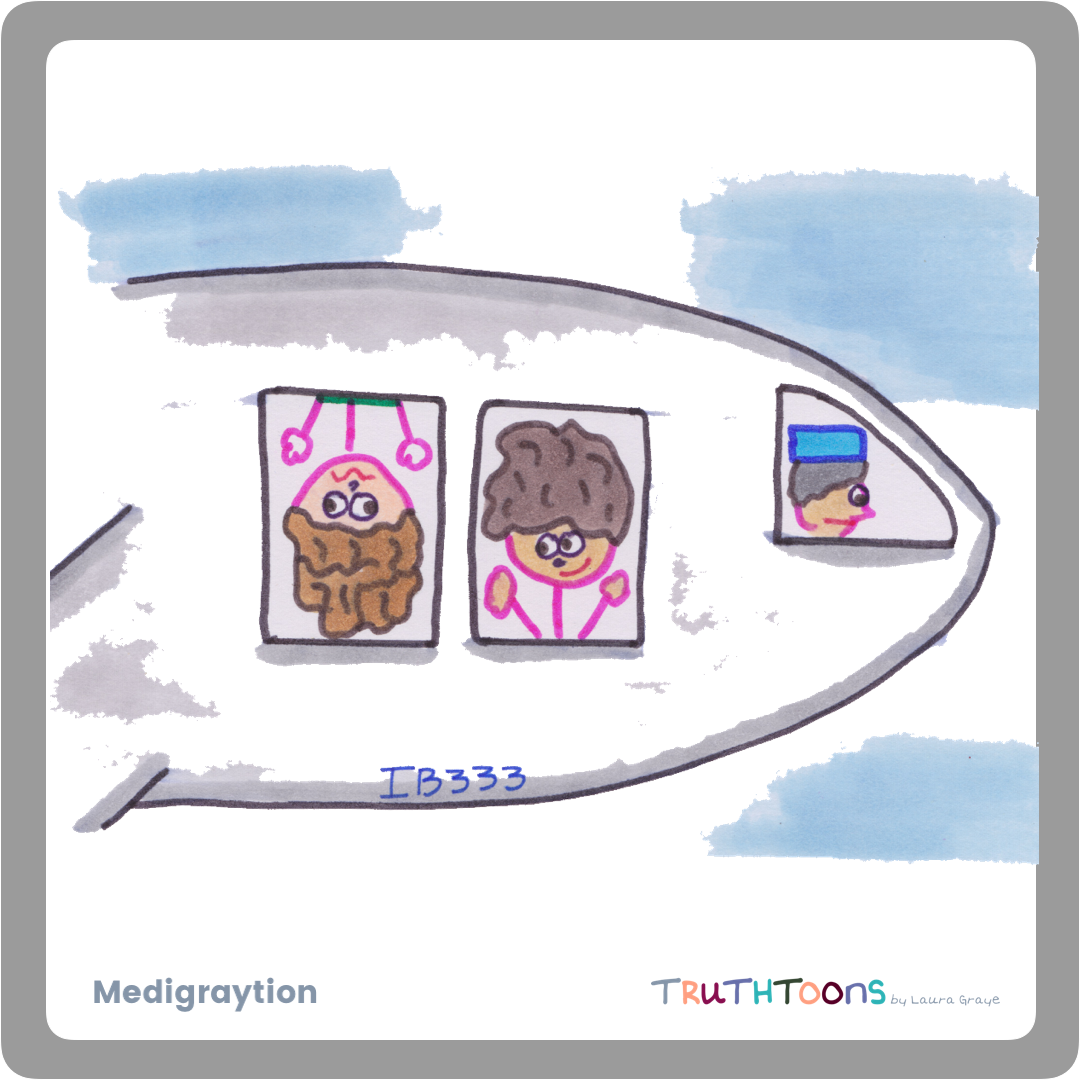Laura Graye
How losing oxygen in small increments can expand your consciousness.
I have a friend who has a lot of anxiety. He has a stressful job, struggles with family ties, eats poorly, is overly concerned with what others think about him, and doesn’t have a spiritual centerboard inside himself. But when he flies, he is as calm as calm can be. He loves flying so much that he will purchase flights with more stops further away to spend more time in the air- also racking up mileage. But more important than those mileage points, he feels a sense of calm he only feels when he is flying. He says his mind slows down.
He’s right. His mind does slow down. It’s a symptom of hypoxia.
With changing cabin pressure during flights there is also a decrease in the amount of oxygen being released into the cabin. That decrease in oxygen translates to decreased oxygen delivered to our brains, a.k.a. hypoxia. The air we breathe at sea level is 21% oxygen. The atmosphere in a pressurized cabin is 15% oxygen. That is a 30% decrease in the oxygen/air ratio. And, our brain tissue requires almost one-third of all the oxygen we breathe.
That’s one reason as flights take off, you can look around and see most of the other passengers asleep-they are entering a state of hypoxia. Not only does hypoxia cause drowsiness, it also causes changes in the way we think. Our brains use oxygen ions to shoot electrical synapses across our neurons, creating neurotransmitters, the chemicals which make up our thoughts, our emotions, our physiology. NIH article on oxygen ions function.
For some, like my friend, this shift in oxygen ions eases his mind, creating a calming effect. For others, the opposite extreme can happen where the effects of lower oxygen can stimulate a physiological terror response-thus the fear of flying makes sense. It can be scary for your brain to believe it may be dying.
Some studies show intermittent low dose hypoxia (IH) can be useful to our health if administered correctly. NIH Study: Unexpected Benefits of Intermittent Hypoxia: Enhanced Respiratory and Nonrespiratory Motor Function. These studies show an increase in neuroplasticity with certain levels and durations of hypoxia. This study indicates that IH for performance athletes is a low dose for at least more than one hour. Similar to the low dose IH on a short flight. This increase in neural plasticity is where you can expand your consciousness. The lowering of oxygen can create a drop in our mental defenses. You can see this when you listen to people on a flight engaged in deep meaningful conversations they would not regularly have, yet are having one with the stranger sitting next to them. When flying, we are in a small hallucinogenic state.
So, while you are in the air and have greater availability for neural plasticity, you might as well take advantage of that expansion opportunity and grow your consciousness. To expand your consciousness in flight, focus your awareness on your connective tissue-that which is deprived of oxygen. Your connective tissue is an incredible pathway for consciousness to drop into your body vibrationally.
Here’s How:
- Relax in your seat. Loosen your seatbelt.
- Drink plenty of water, no in-flight alcohol consumption.
- Take a deep breath in, counting slowly down from four, three, two, one.
- Breath out, slowly counting up to one, two, three, four.
- Ground down into your body, really feeling the weight of your body.
- Now, imagine your body as it is, a web of connective tissue creating a net for the 70% water that you are. Really feel that experientially.
- Envision that netting as it is, a luminous crystalline web of light able to move intelligence through itself faster than your nervous system.
- Breath into this connective netting, feeling the oxygen at the decreased level. Feel this decrease physiologically; feel it emotionally. Connect to the calmness.
- Stay there, right inside your body, right inside your connective tissue, and allow a new consciousness to move through your body into your brain.
- Slowly bring this new awareness to your consciousness with no judgment. Just allow the uncharted thoughts to emerge from your body calmly.
The experience should feel a little bit hallucinogenic. The difference is that you hopefully are not on drugs, and you are staying inside your body vs. floating out into the ethers.


Recent Comments